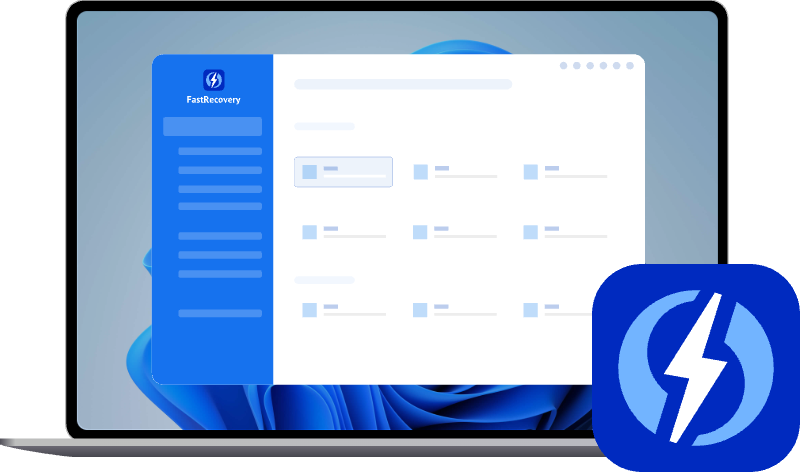D Drive Data Recovery: How to Get It Back with Ease (3 Steps)
In this article, we'll show you 5 D drive data recovery methods in detail. The easiest one is using reliable Windows data recovery software - AOMEI FastRecovery, especially for permanently deleted files.
D drive can be a secondary storage device or a partition in an internal hard disk that can store any type of file. If it's a local partition, it will hold local files and folders, or those related to software installation, system files, etc.
Like the C drive, the D drive may lose data for many reasons. Meanwhile, you may encounter various errors while using the D drive, such as D drive not appearing, D drive is not accessible, D drive data is lost, etc.
Don't worry about it much, and we will focus on the D drive data recovery, including possible reasons, step by step guide, etc. Scroll down to get more!
The reasons for the D drive data loss
Here are the 4 main reasons behind D drive data loss:
- First, accidental deletion is the main cause of data loss on the D drive.
- Secondly, virus or malware attacks can also make the data on the D drive disappear.
- Third, you format the D drive, but without backup, you lose data on the D drive.
- Finally, system updates and other reasons will also cause data loss on theD drive.
5 D drive data recovery methods on Windows
In the following chart, we summarize 5 tested methods to recover data from D drive and the best scenarios for them. Please read carefully and pick one from them.
| Recovery Methods | Best for |
|---|---|
| Use reliable software- AOMEI FastRecovery | Your data on the D drive is permanently deleted. It means you can't find deleted or lost files in the Recycle Bin or elsewhere. |
| Check the Recycle Bin | You deleted files on the D drive recently. If it's a large file or you use "Shift + Delete" keys, it will bypass the Recycle Bin. |
| Rescan the D drive | Your D drive is missing and does not show up in Disk Management. |
| Restore system files and software | Your D drive contains system files, or you want to recover recently installed software. |
| Use Microsoft Windows File Recovery | Your D drive is an NTFS, and the data is a common data type, e.g., Word, Excel, PPT, etc. |
How to perform D drive data recovery step by step
Here in this part, you'll learn how to recover data from D drive step by step using data recovery software - AOMEI FastRecovery, Recycle Bin, Rescan Disk, etc.
▶ Option 1. Recover data from D drive via AOMEI FastRecovery (For permanently deleted)
I highly recommend trying AOMEI FastRecovery, a free yet professional data recovery software. With strong technical support and an intuitive GUI, it enables you to recover deleted or lost files and folders from D drive easily and quickly in Windows 11, 10, 8, 7, etc., and servers. Its free edition can recover data over 500MB.
🧰Powerful data recovery software for Windows - AOMEI FastRecovery
👉 It can recover more than 1000 data types, from documents (e.g.,recover deleted Word files) to images, audios, videos, emails, etc.,and handle any data loss scenario, such as permanent deletion, formatted disk, virus or malware attack, etc.
👍What's more, it's fast. The Quick Scan takes only 3-5 seconds, especially useful when recovering deleted files. It also provides users with some useful features to find files quickly among the deleted files and the ability to recover while scanning.
In addition, it's read-only and does not cause data overwriting, making data recovery difficult. You can click the download button to get started and follow the steps below to recover data from D drive. Don't save them to the D drive, which may overwrite deleted files.
Step 1. Select the D drive first
In the Hard Drive Recovery section, hover the mouse over your D: drive, and click Scan.
Step 2. Scan and find lost data
The scanning process will start automatically. The Quick Scan will be triggered automatically, which takes only 3-5 seconds. Also, you can type the file name or extension in the Search box to find files quickly. Or specify a specific data type & size to find in the Filter.
Step 3. Recover data from D drive
After that, choose the data you want to recover and click Recover to get D drive data back easily and quickly. Please select a new location to save your recovered data. Otherwise, it may overwrite old data on the D drive.
If you can't find the desired data, click the Deep Scan button in the lower left corner. It will scan the D: drive thoroughly to find more data, thus taking longer.
Please wait patiently. Or directly search the file during scanning. Once found, it will display the files directly and allow you to recover them immediately.
▶ Option 2. Check the Recycle Bin (for recently deleted)
If you accidentally deleted data from D drive, you can go directly to check the Recycle Bin. Generally, deleted files will be put into the Recycle Bin first and kept for 30 days, leaving a chance to start D drive data recovery.
Step 1. Locate and double-click the Recycle Bin on your computer to open it.
Step 2. Right-click these files and then scroll the mouse button to select all of them. Then, release the mouse and select the "Restore" option.
▶ Option 3. Rescan the D drive and data
The Rescan Disks in Disk Management enables you to recover the entire D drive and data in it easily. Please follow the steps to figure out how to rescan the disk.
Step 1. Press “Windows + R” and type “diskmgmt.msc” in the Run window. Then, click “OK” to open Disk Management.
Step 2. Click “Action” > “Rescan Disks”. Check if the D drive is available after re-scanning all the disks.
▶ Option 4. Restore missing system files or software
System Restore enables users to revert their computers’ state (system files, installed applications, Windows Registry, and system settings) to a previous point. Note, personal files such as documents, music, pictures, and videos will not be included there. Windows 10 requires you to enable and create system restore points manually.
Step 1. Press “Windows” and type “Create a restore point” in the search bar, then click “Open”.
Step 2. Click “System Restore” > “Next”.
Step 3. Select the needed restore point, and click “Scan for affected programs” to re-confirm all the deleted drives and programs. Then, “Close” this window.
Step 4. Click “Next”. Then, confirm your selected restore point again and click “Finish”.
Step 5. Click the “Yes” button to restore your PC from the selected restore point. Then, your computer will be rebooted to restore.
▶ Option 5. Use Microsoft Windows File Recovery (for technicians)
Windows File Recovery is a command-line recovery software from Microsoft to recover deleted files in Windows 10 version 2004 and Windows 11. Please be sure you learn the syntax and parameters well before recovering any data.
winfr source-drive: destination-folder /mode /switches
Step 1. Type Microsoft Store on the search box and select the top result.
Step 2. In Microsoft Store, search for Windows File Recovery and press Enter. It will show you the search results. Click Get to download and install the Windows File Recovery tool.
Step 3. After the installation, click the Open button. If you don’t want to use it now, just close the Microsoft Store.
Step 4. To use it later, open the Start menu and type Windows File Recovery. Then, select Run as administrator and Yes to authorize.
Step 5. To recover the “music” folder from the D: drive to H: drive, input the command and press Enter:
winfr D: H: /extensive /n \music\
-
"Music" is the folder you want to recover. It can be replaced with any deleted file or folder.
-
D is the source drive from which you want to retrieve data; H is the drive to which you restore data.
-
/extension is the recovery mode. You can also use /regular for recently deleted files. It depends on the file system of the drive and data loss scenario.
Final words
This article summarizes the possible reasons for data loss from the D drive and provides 5 methods to recover data from D drive. Among them, simple and reliable data recovery software - AOMEI FastRecovery will be the easiest method as it has a user-friendly interface, fast speed, etc., and is easy to use.
What's more, it's safe and reliable to use as it is read-only and does not cause any data overwriting. It also has great technical support, so you can contact us if you have any questions.

